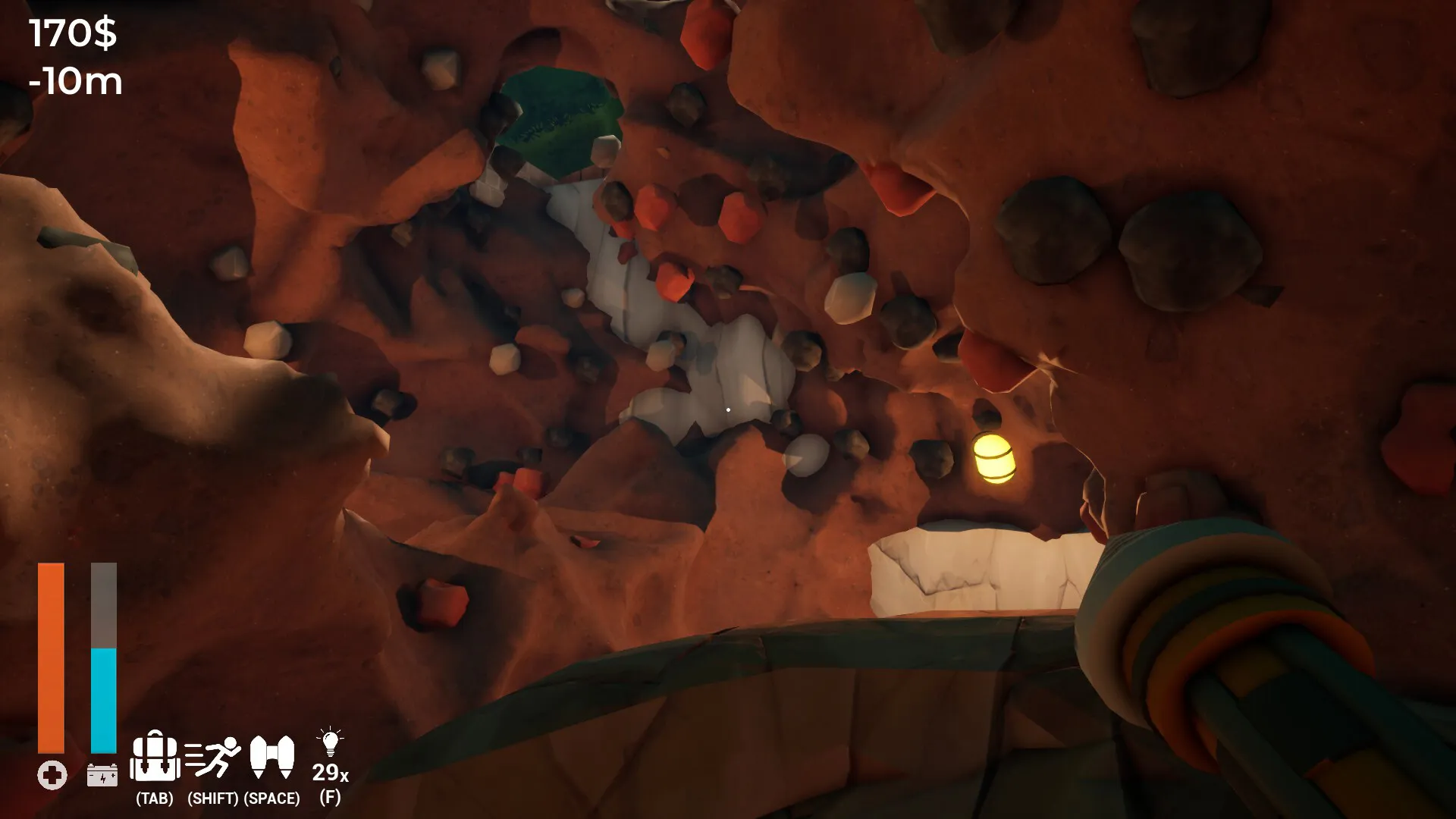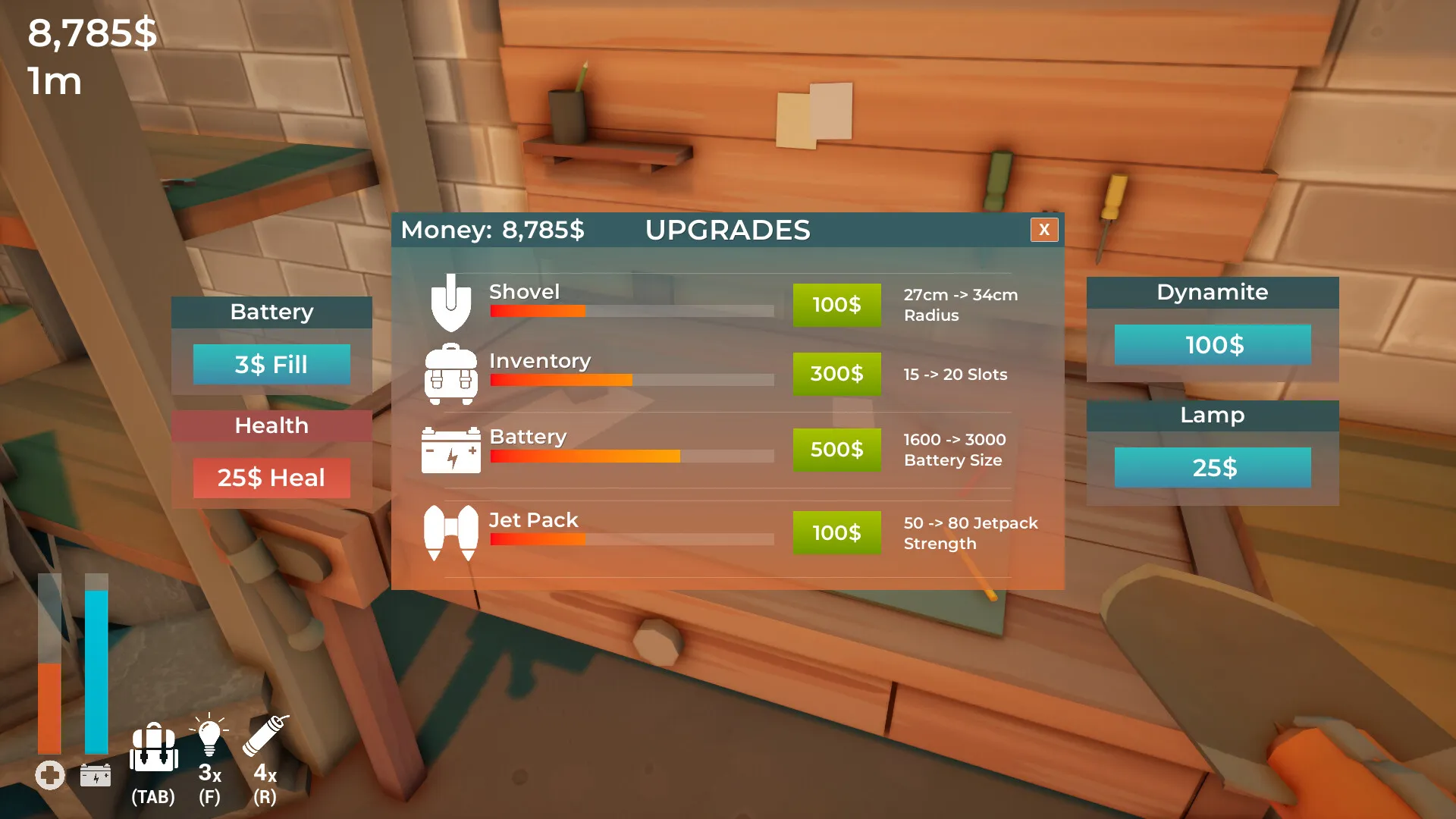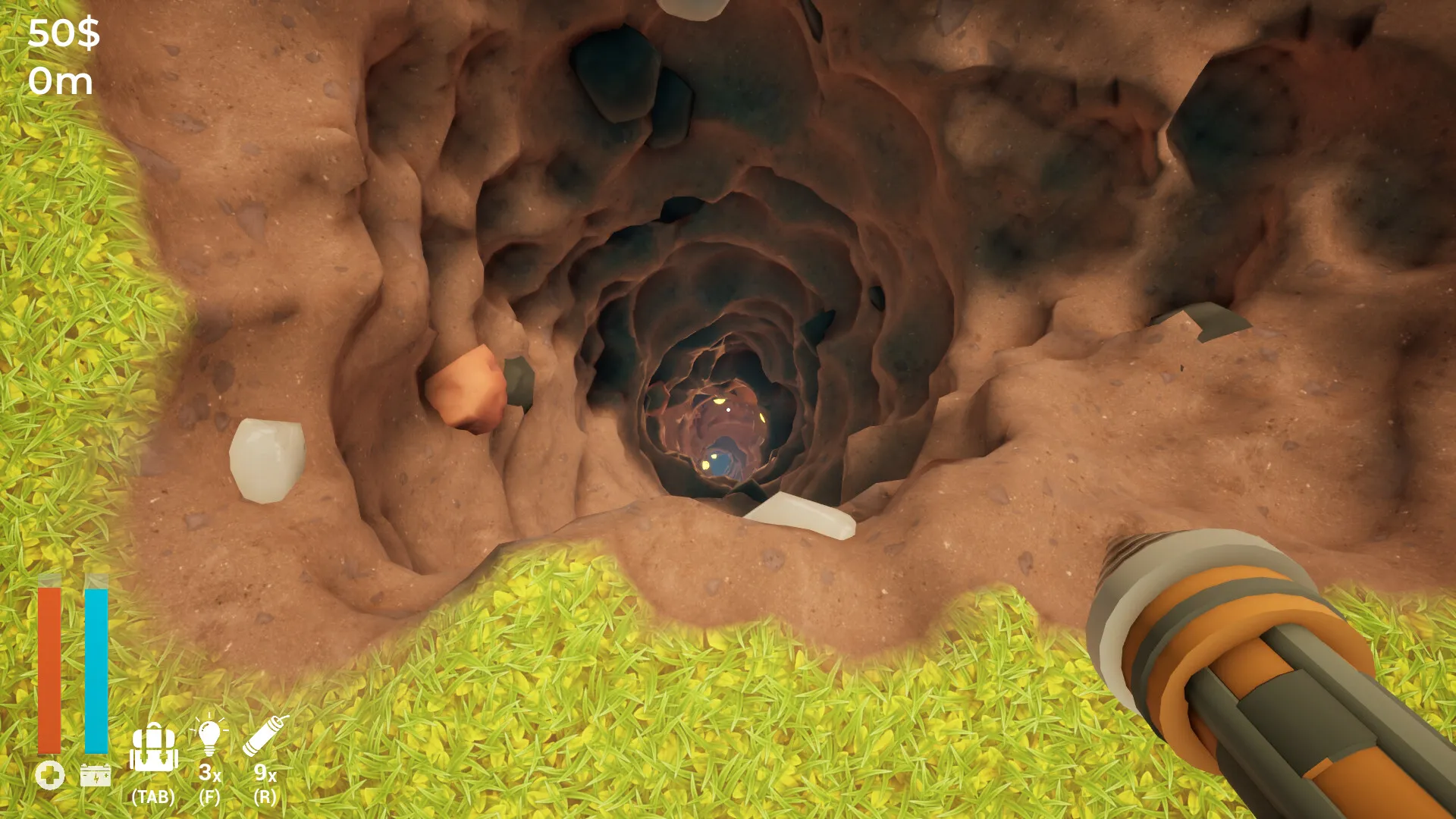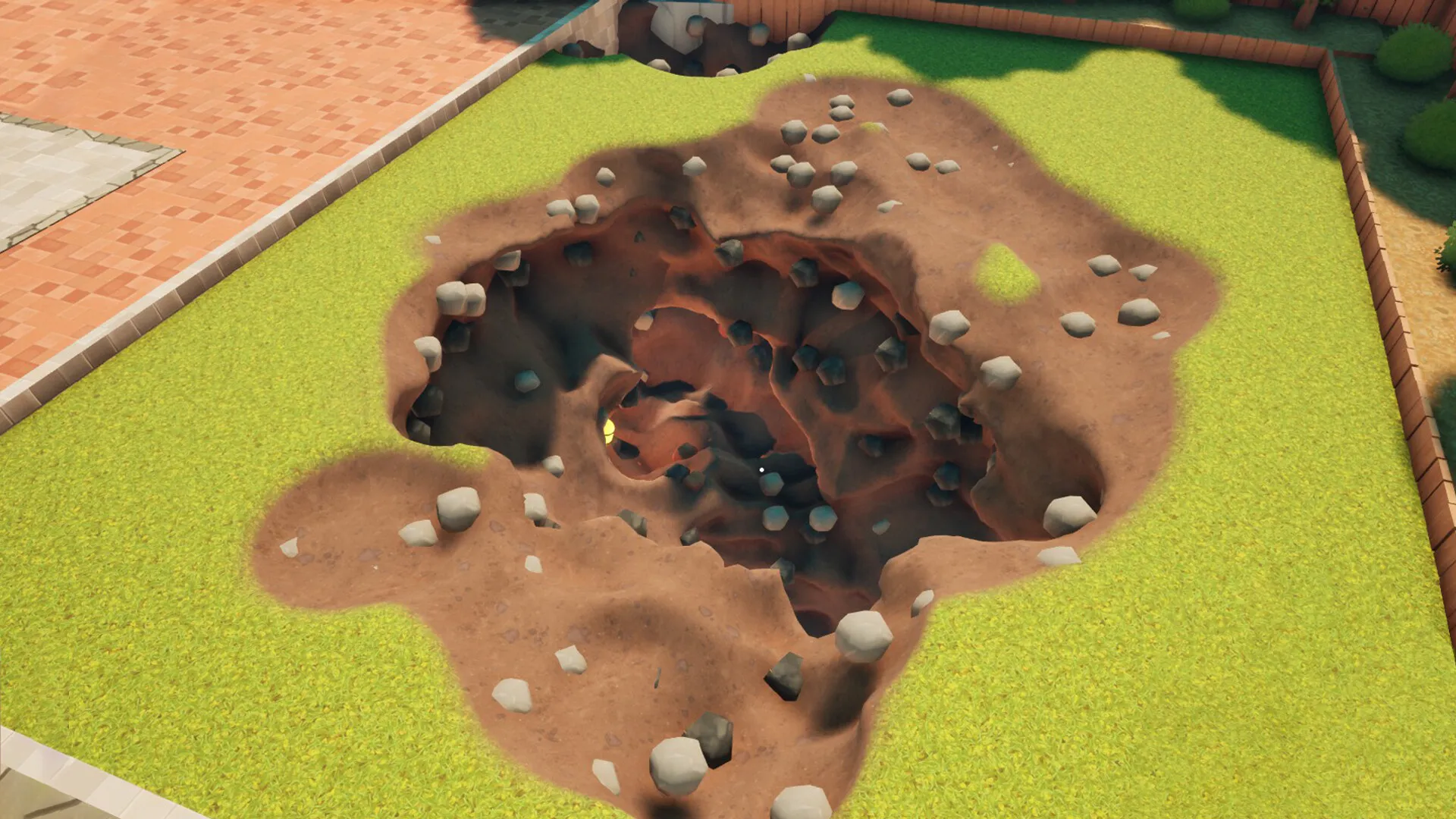A Game About Digging A Hole presents itself with a straightforward objective: acquire a house with a promise of hidden treasure, and proceed to uncover it by digging. The concept is minimal in scope yet carries a subtle air of mystery.
The player steps into a scenario where the primary task revolves around a repetitive, yet absorbing act of digging, resource collection, and incremental upgrades that gradually open up new possibilities in the gameplay loop.
The developer, an independent creator, offers a project that emphasizes simplicity and a reflective pace. The game steers clear of elaborate narratives in favor of a focused, meditative experience.
The minimalist design is apparent not only in the visual presentation but also in the mechanics, where the repetitive actions create a hypnotic quality that many players might find engaging.
This review section will address how the mechanics work with the narrative design, specifically looking at how the act of digging and resource management weaves into the overall experience. Attention will be given to the role of player decisions, the impact of each upgrade, and the balance between challenge and reward.
The simplicity of the game is both its appeal and its challenge, setting a stage for a discussion on how carefully chosen mechanics support the overall story being told through every shovel swing and ore collected.
Beneath the Surface
The game presents a clear narrative through a simple setup: a house bought under the promise of hidden treasure sets the stage. The storyline unfolds with a straightforward premise that grows in quiet complexity, hinting at unexpected twists along the way.
While the main plot remains sparse, subtle narrative cues offer hints of a twist ending that adds an extra layer to the experience without overt exposition.
The setting plays a critical role in this experience. The game splits its space between the familiar backyard and a mysterious underground realm.
The home environment is rendered in everyday detail, offering a stark contrast to the dark, secretive world below ground. This contrast deepens the sense of anticipation each time the player moves from the bright, unremarkable surface into the hidden depths.
The mood is carefully built through simple storytelling and environmental details. Small, thoughtful touches in the surroundings help form a feeling of suspense and wonder.
The mundane appearance of the house and its garden hides a more complex world below, inviting players to explore further with a mix of caution and curiosity.
The subtle narrative cues, combined with the contrasting settings, work together to create a space where every choice to dig is loaded with potential discovery.
The interaction between the physical space and the unfolding story makes each moment feel personal, prompting the player to consider the cost and reward of every action without overwhelming them with heavy lore.
Mechanics in Motion
The game tasks players with a clear series of actions that shape the entire experience. You begin by digging, then collect resources, return to a safe zone to exchange what you’ve gathered, and finally reinvest in upgrades.
This sequence forms a steady rhythm that players quickly learn, and its repetition influences the overall feel of the game. Each cycle challenges you to manage your time and resources efficiently, creating a flow that rewards persistence.
The act of digging is central to the experience. Using a click-based system, players must time each action carefully to clear soil and reveal hidden ores.
This method may seem straightforward at first, but it demands precision, particularly in the early stages when you rely on a basic tool.
The transition to using a drill represents a significant improvement in the fluidity of movement; until then, the manual clicking can feel laborious.
The drill upgrade provides a welcome relief, making the process less physically taxing and allowing for smoother progress as you move deeper underground.
Collecting resources and managing your inventory adds a layer of strategic decision-making. The game limits the number of items you can hold, meaning you must plan your trips to the safe zone carefully. Every decision about when to return and sell your finds becomes critical.
This restriction forces you to think about how to maximize each excursion, balancing the urge to dig further with the necessity to safeguard your hard-earned items.
The controls play an important role in shaping the experience. While the game supports both mouse and controller input, players report that the precision required for the digging process often favors one method over the other. Some players find that the camera can lag or miss slight shifts, which affects the accuracy of each dig.
This can be particularly challenging when every click matters, especially in sections where timing is essential to avoid obstacles or secure precious resources.
The repetitive nature of the game has a double effect. On one hand, it provides a predictable routine that can be calming and even addictive, drawing you into the cycle.
On the other hand, the continuous repetition might become taxing for some players, who may find that the lack of variety in tasks can reduce the overall satisfaction of progressing.
The game manages to maintain engagement by linking each repetitive cycle to incremental improvements, so every small victory feels like a step toward a larger goal.
Progression Through Upgrades
The upgrade system is divided into four main areas: shovel (which eventually evolves into a drill), battery power, inventory size, and jetpack. The initial tool, a basic shovel, starts the player on a path toward improved digging capacity, paving the way for the drill upgrade that significantly speeds up resource extraction.
Battery enhancements extend the duration you can spend digging before needing to recharge, while increasing your inventory capacity allows you to collect more ores on each expedition. The jetpack, though less critical, provides a safety net by enabling quicker repositioning in tight spots.
The economic design is based on selling ores for cash, which in turn is used to purchase these upgrades. Prices for improvements grow quickly, setting up a steady challenge that requires players to plan their spending.
This gradual escalation in costs affects the pacing by making each upgrade a meaningful decision, rather than an automatic step forward. It creates a clear trade-off between saving for a high-cost upgrade and the immediate benefit of modest improvements.
Players must weigh their choices carefully, deciding whether to invest in faster digging or enhanced resource management.
Reaching the maximum level of an upgrade before fully exploring the game’s potential can lead to a sense of imbalance, as the available challenges may then feel less engaging. This situation prompts a careful balancing act that encourages strategic planning throughout the play session.
After finishing the game, a new mode is unlocked that brings additional challenges and goals. The introduction of an achievement system gives players extra objectives that extend the experience and encourage replay.
In this way, each decision in managing resources and upgrades is tied directly to both the immediate gameplay and the longer-term structure, ensuring that the journey remains engaging for both casual and seasoned players.
Aesthetic Appeal in Simplicity
The game opts for a straightforward visual approach, using simple and clean art that emphasizes function over flash. The visual elements are built on basic assets and a restrained color palette that lends a calm atmosphere to both the surface and underground settings.
This design choice creates a clear and uncluttered environment where every element on screen serves a purpose. The user interface is designed with clarity in mind, displaying upgrade menus, health, battery, and inventory indicators in an accessible manner.
Each on-screen element is easy to understand, which helps players keep track of their progress without distraction.
Sound plays a key role in reinforcing the tactile nature of the gameplay. The sound effects, such as the satisfying noise of a shovel striking the ground or the crisp clunk when an ore is collected, enhance the tactile feedback and support the player’s focus on the tasks at hand.
The lack of continuous background music during gameplay means that every sound stands out, emphasizing the repetitive actions and their timing. This absence of music leaves room for personal audio choices, inviting players to pair the game with their own soundtrack if they wish.
In this setting, the visual and audio components work together to support the game’s core mechanics. The clarity of the user interface, combined with a straightforward art style and deliberate sound design, helps maintain a steady rhythm.
Each design element supports the player’s understanding of their actions and progress, making for a cohesive experience that is accessible to both newcomers and experienced players.
Digging Deeper
The game offers a system of milestones that reward every shovel swing, ore collection, or misstep. Players are challenged by goals such as achieving a set number of digs, gathering a specific quantity of resources, or enduring several falls.
These benchmarks serve as constant motivators, pushing players to refine their approach and improve their efficiency. Each milestone unlocks a sense of accomplishment, giving tangible weight to every decision made during the dig.
Once the initial playthrough concludes, an additional mode opens up that transforms familiar tasks into fresh challenges.
This mode introduces modified objectives and a tougher pace, prompting players to revisit their earlier strategies and experiment with different upgrade paths. The design encourages multiple play sessions, as every run carries its own set of challenges and rewards.
The game’s structure maintains a balance between a repetitive routine and the excitement of new goals, ensuring ongoing interest for both casual and dedicated players.
The Review
A Game About Digging A Hole
A Game About Digging A Hole may not offer endless variety, but its clear objectives and rewarding upgrade mechanics keep every decision significant. The straightforward narrative, combined with deliberate visual and sound design, creates a distinct experience that challenges players to plan and persevere. A title that caters well to fans of methodical progression, it stands out for its thoughtful design despite a repetitive loop.
PROS
- Engaging upgrade and progression system
- Simple yet satisfying gameplay loop
CONS
- Repetitive core mechanics
- Basic visual presentation




















































